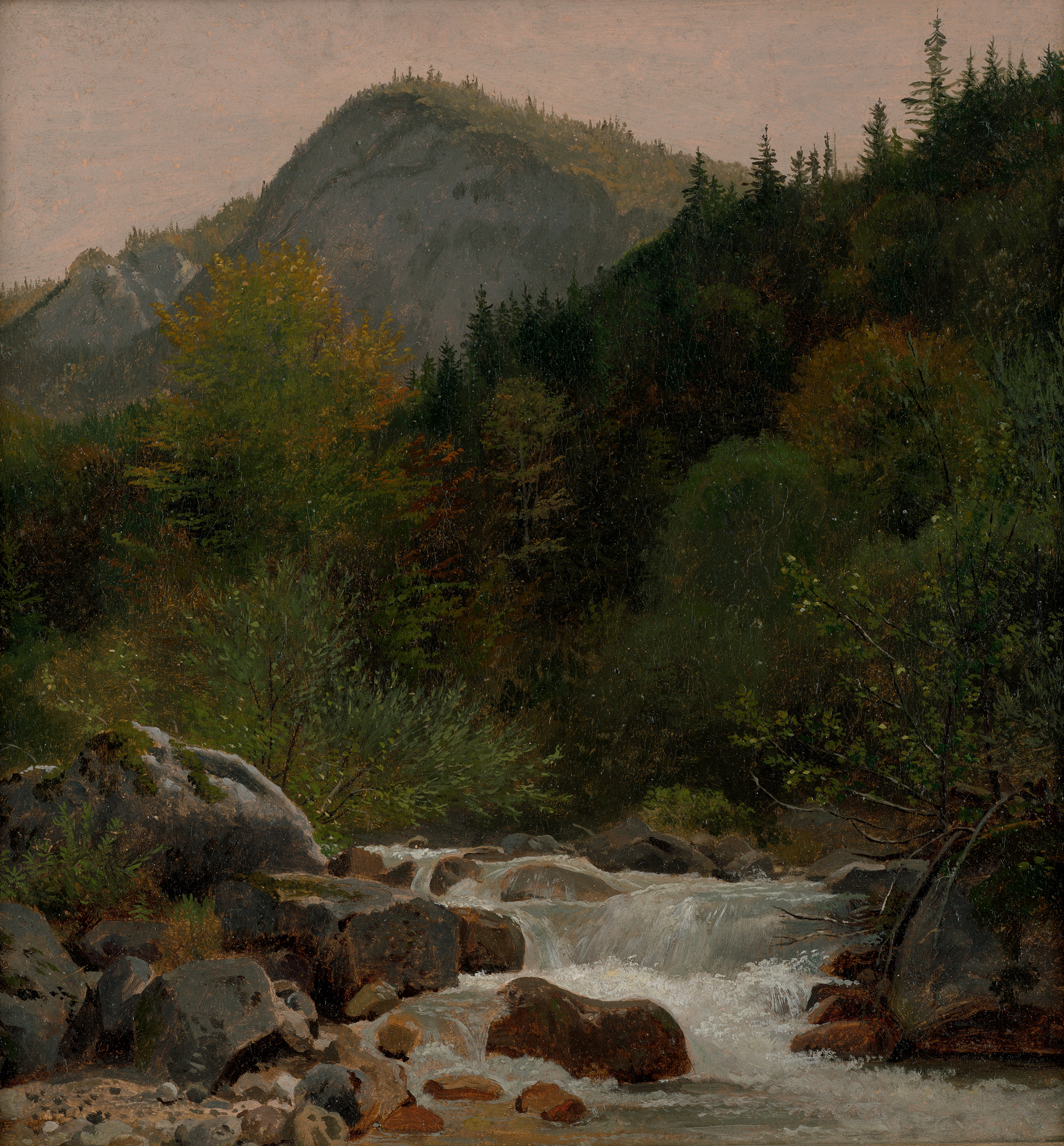Loading the page ...
Carl Christian Constantin Hansen
(1804 Rome – 1880 Fredericksberg)
Brook in the Tyrolean Alps. Oil on paper, mounted on canvas. 27 x 25 cm. 1834.
Baptised in Vienna, Hansen was named Constantin in memory of his godmother Constance, the widow of Wolfgang Amadeus Mozart. Having first trained as an architect at the Copenhagen Academy, he turned to painting in 1825 and was apprenticed to Christoffer Wilhelm Eckersberg, who was to have a lasting influence on him. Inspired by Eckersberg, Hansen developed a realistic approach to nature, which was characterised by refined colouring and a faithful rendering of light and atmosphere. Between 1835 and 1844 the artist lived and worked in Italy where, though moving among the Danish artists grouped around Bertel Thorvaldsen, he adhered to his true-to-life, objectivist view of art. The frescoes Hansen made for Copenhagen University between 1844 and 1853 together with his friend Georg Hilker (1807–1875) are considered his most important work.
He ranks as one of the foremost representatives of the Golden Age of Danish painting. Between 1824 and 1878 Hansen participated in the exhibitions of the Copenhagen Academy in Charlottenburg, being appointed its deputy director in 1873. This sensitive nature study arose in 1834 in Tyrol when he was on his way to Italy. Painted en plein air, its freshness and genuine affinity with nature illustrate all the virtues of Hansen’s art. The cool, fresh white of the rushing stream forms a delightful contrast with the autumn colours of the foliage and the overcast sky.
Provenance: From the estate catalogue of the artist, Copenhagen 1880, no. 17; collection of Consul Schierbeck, Helsingor.
Literature: E. Hannover. Maleren Constantin Hansen – En Studie I Dansk Kunsthistorie. Copenhagen 1901, no. 93
